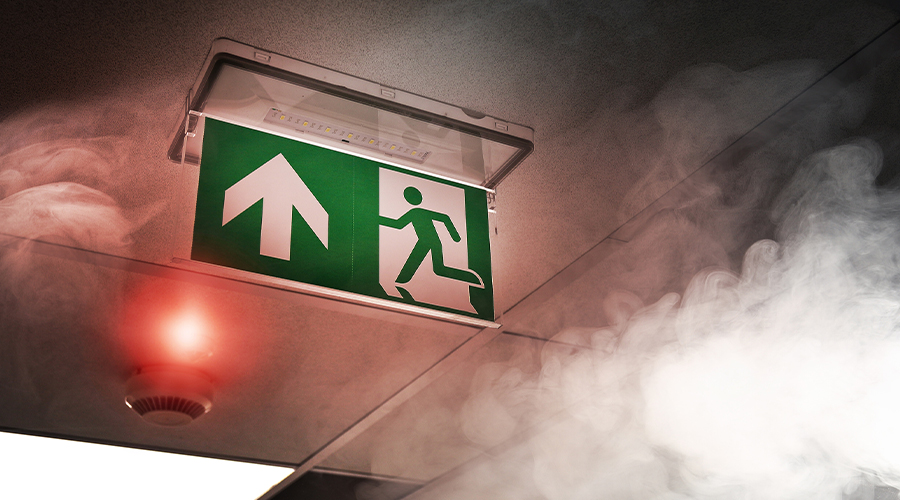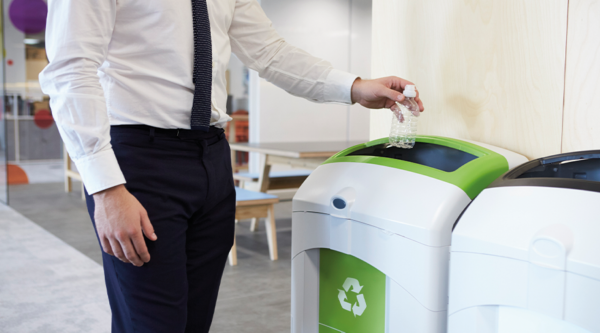

More than half of UK businesses have experienced an incident involving lithium-ion batteries. This suggests a knowledge gap about lithium-ion battery fire risk in the workplace, employers should urgently review their workplace risk assessment and procedures to ensure this is managed properly.
The use of lithium-ion batteries at work
As discussed in our article on defending lithium-ion battery product liability claims, these batteries are in widespread use. With higher energy density, more efficient charging qualities and a longer lifespan than other batteries, they are now found in a variety of equipment and places. From a worker’s own e-bike to their employer’s forklift truck, to the energy storage system powering the site, lithium-ion batteries are, quite literally, everywhere at work.
Fire risks associated with lithium-ion batteries
Under normal conditions, these batteries are safe. However, if they are abused, such as physically damaged, inappropriately charged or subjected to extreme temperatures, they can be rendered unstable. Unstable batteries can change suddenly and the combination of flammable electrolytes and stored energy within the battery can lead to a fire.
Increased proliferation of lithium-ion batteries is being linked to an increasing number of fires in both domestic and workplace settings, the exact causes of which are various. been ten deaths and 190 injuries reportedly sustained from lithium-ion battery fires since 2020.
A survey conducted by Censuswide in September 2024 of 501 UK businesses revealed that 54% had experienced an incident involving a lithium-ion battery.
A disconnect in understanding the fire risk associated with lithium ion batteries
Lithium-ion battery fire risk is now established as far as regulatory authorities are concerned. However, general public understanding of the particular fire risk associated with lithium-ion batteries is low, despite press reports of fires involving e-bikes and e-scooters in recent years.
So, the Office for Product Safety and Standards (“OPSS”) and various Fire and Rescue Services are running campaigns to raise general public awareness. See the OPSS Buy Safe, Be Safe campaign and the London Fire Brigade’s Charge Safe campaign.
Fires involving lithium-ion batteries in the workplace may not have garnered so much attention in the press, however they are being monitored by the authorities and by insurers.
Enforcement action is being undertaken
Regulatory action is already being taken following fires in which people have lost their lives. Regulators have an obligation to prevent as well as enforce. They will increasingly investigate lithium-ion battery fire risk in the workplace, even in the absence of fire breaking out. To prevent fire and avoid action being taken against them, responsible employers should urgently review how the fire risk associated with lithium-ion batteries is being managed in their workplaces.
How to conduct a workplace fire risk assessment on lithium-ion batteries
Employers are legally obliged to review lithium-ion batteries as part of fire risk assessment under The Regulatory Reform (Fire Safety) Order 2005, Construction, Design and Management Regulations 2015 or The Dangerous Substances and Explosive Atmospheres Regulations 2022.
The following non-exhaustive list sets out key issues to be considered as part of such a fire risk assessment.
Who is conducting the risk assessment?
- Ensure whoever is conducting the risk assessment truly understands the risks associated with lithium-ion batteries, such as thermal runaway, off-gassing, sustained conflagration, explosion risk and rapid fire spread.
What lithium-ion batteries are in your workplace?
- Identify what items containing these batteries are present at your workplace. As a general rule, the bigger the battery, the greater the risk of fire in the event of failure
- When buying work equipment, buy only from reputable suppliers, check compliance with international standards and do not buy second-hand batteries
- Ban workers from bringing any non-standard or modified batteries and equipment of their own to work.
Keep records
- Record your findings as part of your risk assessment. As always, keep that risk assessment under review and ensure workers are trained and follow management instructions.
Use and handling
- Use work equipment containing lithium-ion batteries properly. Read and follow instruction manuals and ensure your workers do the same. As well as equipment used by your business, consider the presence of employees’ personal items, such as e-bikes and mobile phones
- Handle batteries with care
- Make battery inspection part of pre-use work equipment inspections. Keep records of these inspections
- Check regularly for damage or defects. If a battery appears to be damaged, do not use it, do not charge it and isolate it from the general work space
- Large equipment should be inspected on arrival on site, especially on construction sites where numerous contractors’ equipment may be present in an ever-changing turnover
- Given the October 2024 government guidance on e-bikes, consider whether you really want to allow workers’ e-bikes to be brought to work and certainly whether you will allow them to be charged at work.
Charging
- The majority of fires reportedly occur whilst lithium ion batteries are being charged. So, it is vital to review how lithium ion batteries are being charged
- Are the correct chargers being used? Only the chargers issued with the equipment or those with exactly the same specification should be used
- Avoid overcharging and follow manufacturer’s instructions to the letter
- Consider where items are being charged and how many are being charged simultaneously in the same area. Items should not be charged in the vicinity of combustible materials. They should not be left on charge overnight or in unsupervised or unoccupied locations.
- It may be appropriate to invest in charging lockers
- Charge electric vehicles away from flammable materials and buildings
- Consider whether you need to ban workers from charging their personal items whilst at work.
Storage
- Store batteries carefully, reducing their charge if necessary and in accordance with product manuals. If not in use, store them away from heat and moisture and flammable materials. In appropriate circumstances, fireproof bags or metal containers may need to be used.
Disposal
- Dispose of batteries carefully at the end of their lifecycle. Lithium-ion batteries should never be placed in general waste – there have been many fires in waste facilities and there are environmental hazards associated with lithium-ion batteries too
- Take particular care in disposing of damaged or faulty batteries.
Train your workforce regularly
- Educate your workforce and ensure they follow your instructions about handling, using, charging and storing any item containing lithium-ion batteries.
Emergency procedures
- Review fire detection systems. Consider installing automatic fire detection systems if electric vehicles are being charged in the workplace.
- Check emergency procedures. Lithium-ion battery fires are known to be more difficult to extinguish than fires from other sources. Toxic gases and vast quantities of smoke can be released almost immediately. Do your emergency procedures account for these particular risks? Consider making specialist fire extinguishers available.
- Ensure the fire service knows about your charging arrangements and ask them for advice on training staff to deal with lithium-ion battery fires.
Check insurance
- Liaise with your insurer. Insurers are beginning to issue guidance around lithium-ion batteries themselves. Make sure full disclosure is made to insurers to reduce the risk of indemnity refusal in the event that you have to claim on insurance.
Videos freely available on the internet are a startling introduction in the speed at which this kind of fire can spread. Yet, this risk is not well-understood outside of specialist circles. This article is a high-level introduction to the issues only. Suggestions of areas to review are not exhaustive. Given the seriousness of any fire risk, employers should review the arrangements in their workplaces, seeking expert guidance if in any doubt.










